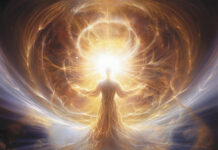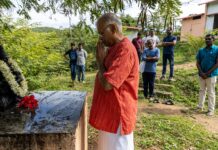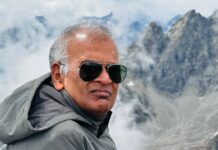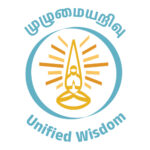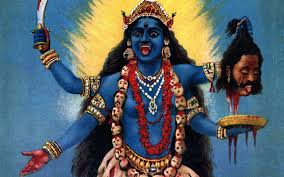
The formation of natural religions is studied worldwide. World-renowned researchers from Joseph Campbell to Claude Lévi-Strauss have provided insights into how natural religions are formed. Let me illustrate the overall picture succinctly.
Natural religions originate in tribal/indigenous (i.e. Adivasi) life. Calling them barbarians is like throwing mud in our father’s face. No scholar anywhere in the world today calls indigenous people (Adivasis) barbarians. There is a field called anthropology to study them. Very sophisticated research is done, and rare facts are discovered.
When you really think about it, many of the foods we consume today were discovered by these indigenous people. Modern science, medicine, and even agriculture have roots in indigenous knowledge.
Certainly, natural religions like Hinduism have inherently developed from indigenous traditions. From that indigenous root, it shoots and grows into a tree. In it, great sages, renowned philosophers, and eminent scholars emerge. That is how Hinduism came to be.
The largest natural religion in the world today is Hinduism (remember, it is Hindu Dharma). Hinduism’s uniqueness and pride is that it originated from the indigenous culture.
The indigenous people understand nature and the universe in their own unique way. They perceive deities as well.
Generally, they have three types of deities.
- They revere their ancestors as deities.
- Forces of nature are personified and worshiped in different ways.
- They take animals, birds, mountains, rivers, etc as their clan symbols. In time, they become gods. This is the worship of clan symbols.
The individual who asserts that the indigenous people performed these rituals due to their ignorance is merely ignorant themselves. Before donning clothing, humans were spiritually attuned. Even before utilizing fire for cooking, they initiated divine rituals. If one asks for evidence, we can even witness today’s indigenous people continuing various forms of divine worship at the same level.
The reason divine worship emerged among indigenous people is because they recognized the omnipresent divine power that pervades everywhere. A spiritualist understands this and acknowledges it. They perceive divine presence in mountains, rivers, rain, thunder, lions, and peacocks. They worship it.
What a great event if some ancient man fifty thousand or lakhs of years ago somehow sensed the presence of a deity and worshiped it by placing one stone on top of another. What a great continuation if we still worship that form as Shiva Lingam even today. The one who overwhelmingly realizes this continuity is the one who understands the Hindu religion in the real sense.
Tribal worships intermingle with each other over time. It takes place like streams joining to form a river. After many thousands of years, scholars transform those spiritual beliefs into philosophical doctrines. Over time, these philosophical doctrines debate and interconnect, which is what we refer to as the natural religion.
If a natural religion has emerged in this way, then the process of its emergence doesn’t come to a halt at any particular time. That process continues to evolve in accordance with the nature of that religion. It persists through millennia, adapting as needed.
The spiritual practices referred to as Hinduism have always been active in the same manner. In the ancient past, during a period we may not fully understand, the archaic deities of indigenous peoples were gradually transformed into major deities. That evolution continues to this day. Even now, the deities of indigenous peoples are integrated into Hinduism.
For example, Kulikan, the adivasi deity in Kerala, came into the Hindu worship tradition within the last hundred years. Around us, we can see so many deities coming into the Hindu tradition. It doesn’t end here. Perhaps if Hinduism goes to Africa, the deities of African tribes will come in and merge with Saivism and Vaishnavism. Nyame, the sky deity of the Africans, could become the form of Vishnu. We would wholeheartedly accept it.
We call this ‘harmony’. In Sanskrit, it is called ‘Samanvaya’. It means the nature of seamlessly integrating without rejecting or desteoying anything. It is the characteristic of remaining undisturbed without changing what has been integrated. This is the nature of natural religions. This is the foundation of Hinduism.
We must feel proud of this quality. Hinduism does not say, “This alone is truth, everything else is false.” It says, “The ocean is one. All rivers merge into it.” This profound parable is found in the ancient Chandogya Upanishad.
From time to time, sages in the Hindu tradition have emerged and have been making this integration. If we look at history, we can see that every sage, like Narayana Guru, Ramakrishna Paramahamsa before him, Vidyaranyar before him, and Shankara before him, did the same thing. Krishna does the same thing in Gita. This is what Vedavyasa did before that.
Thus, a natural religion like Hinduism does not have an unchanging form that has existed through all time. If we go back centuries, we can see that its structure and its worship have changed. The Cauvery we see in Trichy is different, and the Cauvery we see in Mysore is different. But it is Cauveri. Hinduism is very similar.
Why do we say that? I talked about balance or integration. That connection is ongoing. But on what basis does that connection take place? That connection takes place on the basis of certain knowledge and insights. It doesn’t change. It continues to go through so many transformations. That is the essence of Hindu tradition. It is because of this that we call Hinduism the way of knowledge or dharma.
Jeyamohan
Translated b Geethaa Senthilkumar


